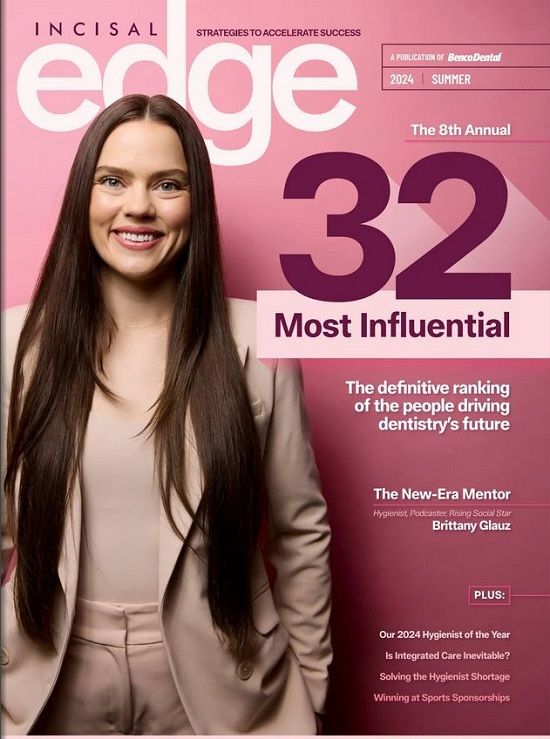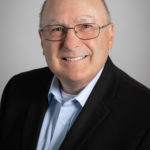How can dentists best separate the signal from the noise of the latest research that might influence our clinical decisions?
LET’S REFLECT, shall we, on deep impact. No, I’m not referring to the 1998 movie about a comet on a collision course with Earth. (Though it’s worth a stream if it’s midnight some Saturday and you can’t sleep.) I’m talking about the significant effects the decisions we make in the dental practice will inevitably have for our patients.
The information sources that guide our professional choices have exploded logarithmically of late. We have access to print and digital publications, expansive websites from manufacturers and industry opinion leaders and the surfeit of knowledge available on YouTube: techniques, devices, materials . . . it can seem almost overwhelming. (I do not, meanwhile, intend to look later to see how many “likes” this article generates—though I have had colleagues comment on my likes and video views previously. Overwhelming information indeed.)
The things that guide the decisions we make stem from a mix of scholarly research and our own clinical experience. Within the academic community, for example, peer-reviewed articles in prominent journals are invaluable. A publication’s “impact factor”—that is, a tally of how often a given journal’s articles are cited elsewhere, as measured by the Journal Citation Reports database—serves as a proxy for its relative importance within its field.
What does this mean to us as practitioners? First, it indicates that the articles in question—be they research, discussion of an innovative technique or a systematic review of a given topic—have high value among those who know the field best. Those on the cutting edge, so to speak. But those impact-factor numbers can be deceiving.
Unsurprisingly, medical and pure science journals have significantly higher impact factors than any dental publication could hope to achieve. The New England Journal of Medicine, for example, has an impact factor of 71. Nature’s is 43; the journal Science clocks in at 41. The Journal of Dental Research, by contrast, logs a mere 5.1 impact factor, and the Journal of Periodontal Research just 2.6.
All these journals play an important role by shaping the ways in which doctors marshal evidence in the service of treatment for various pathologies in the future. A recent editorial in the weekly journal PLOS Medicine carried a straightforward headline: “Why Most Clinical Research Is Not Useful.” It offered a full buffet of food for thought about the difficulty of judging blue-sky research based on its potential practical impact, noting that years or even decades might pass before such research bears fruit for actual patient care.
Think of the profound changes roiling every medical discipline. Based on what was known only two decades ago, cancer specialists altered the way they treated various cancers, targeting the proteins produced by cancer cells that seemed necessary for those cells’ survival. The results of this approach were disappointing. A piece in a recent issue of Science Translational Medicine highlighted one reason for this failure: Scientists were aiming for the wrong target. There’s no shame in that, of course—but now, new technologies allow for identification of better, potentially more successful tactics.
The same holds true for the dental-treatment decisions we make for (and with) our patients. For those peer-reviewed research and clinically oriented dental journals, the impact starts with the specialists who review them, sharing their information via study clubs and ordinary conversations—but the overall readership, and thus the potential outlets through which to share the information, is more limited.
How deeply do dental journals penetrate? How much do they factor in to the decisions we make? These publications come across our desks like a tsunami of ink and glossy paper every month. We stack them up, put them aside or throw them away. We might even read them once in a while—but do we really understand what we’re reading? In some cases the articles they feature are more infomercial than science, even if there’s good, peer-reviewed science to support the suppositions at hand.
How, too, do you know what to believe and what to question? Even among peer-reviewed publications, how well-informed are the reviewers? You don’t know. It’s therefore incumbent upon you to be a stringent critic of everything you read, of the presentations you attend, of anything you view online. The most intractable barrier preventing us from staying up to date with it all is time. We can only spend time, not bank it—so keeping current is by definition an impossible task.
Make use of whatever resources you can, though. Search PubMed.gov, which collates an enormous amount of information from the U.S. National Library of Medicine and the National Institutes of Health. Google Scholar can be extremely useful as well. When I speak to dental groups, or to my students, I make the case for two sets of impact factors for publications: a “scholarly works” factor and a “clinical choice” factor that would represent a proof of concept for clinical decisions.
Ultimately, our responsibility is to employ materials, devices and techniques based on the best evidence available. Not long ago, I read an essay focused on the battle—an arduous campaign for most of us, to be sure—to go through life with no regrets. Say you made an important clinical decision 25, 20, even 10 years ago that you based on the best of your then-current knowledge, only to find out that it wasn’t the optimal choice. Should you beat yourself up about it? I say no—but you seal off this mental escape hatch if you rely on anything but the absolute best evidence available at the time.
We can’t hang onto the past, of course, nor would we want to. Dental knowledge and resources are changing at warp speed. Use all the knowledge available to you, but regard it with a critic’s discernment. Excellence of care for our patients, in the end, is up to us—and that’s ultimately the impact factor that matters most.
HOWARD STRASSLER, DMD is a professor and the director of operative dentistry at the University of Maryland School of Dentistry. He practices in Pikesville, Maryland.
Hints From Howard
An Ounce of Prevention
MOST THINGS eventually wear out, and our teeth are no different. As aging patients keep their teeth longer, the wear on the incisal edges of anterior teeth—tooth attrition—can approach almost epidemic proportions. It’s not unusual for a practitioner to watch a patient’s front teeth get shorter and shorter. Yet making use of a conservative technique that employs a wear-resistant composite resin can maintain the height of anterior tooth surfaces and reduce wear going forward. Intrigued? Click on the video to learn all about it.




